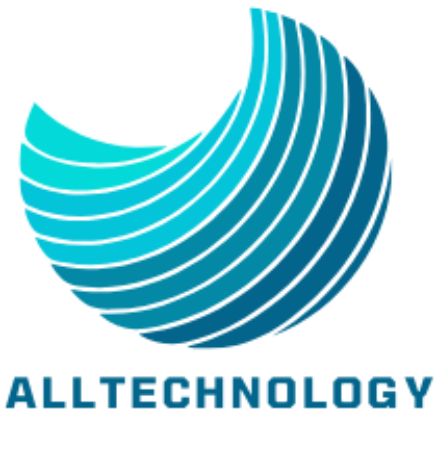Introduction
Hello Bloggers Welcome to alltechnology.in blog Today I will tell you about —5 Trends Shaping the Future of Information Technology. सूचना प्रौद्योगिकी के भविष्य को आकार देने वाले पांच प्रमुख रुझान यहां दिए गए हैं:
1. Artificial Intelligence (AI) and Machine Learning (ML)
AI and ML continue to be at the forefront of technological advancements. Generative AI, like ChatGPT, is pushing the boundaries of what’s possible, while explainable AI is making it easier to understand how AI systems make decisions. These technologies are enhancing customer service, marketing automation, and software development.
2. Internet of Things (IoT)
The IoT is expanding rapidly, with more devices being connected to the internet. This trend is driving innovations in autonomous transportation, building and environmental monitoring, and healthcare. However, it also brings increased cybersecurity challenges that need to be addressed.
3. Cloud Computing
Cloud computing remains a dominant trend, offering scalable and cost-effective solutions for data storage and processing. Organizations are increasingly adopting cloud services to improve flexibility and collaboration.
4. Cybersecurity and Data Privacy
With the rise of cyber threats, cybersecurity and data privacy are becoming top priorities. Advanced security measures, such as encryption and multi-factor authentication, are being implemented to protect sensitive information and maintain user trust.
5. 5G and Edge Computing
The rollout of 5G networks is enabling faster and more reliable internet connections. Combined with edge computing, which processes data closer to the source, these technologies are enhancing real-time applications and creating smarter environments.

How Can Businesses Benefit from IT Innovations?
1. Enhanced Efficiency and Productivity
Automation: IT innovations like AI and robotic process automation (RPA) streamline routine tasks, reducing human error and freeing up employees to focus on more strategic activities.
Data Management: Advanced data analytics and management systems allow businesses to process and analyze large volumes of data quickly, leading to better decision-making and operational efficiency.
2. Cost Savings
Cloud Computing: By moving to the cloud, businesses can reduce the costs associated with maintaining physical servers and IT infrastructure. Cloud services offer scalability, allowing companies to pay only for the resources they use.
Energy Efficiency: Modern IT systems are designed to be more energy-efficient, reducing power consumption and lowering operating costs.
3. Improved Customer Experience
Personalization: IT innovations enable businesses to collect and analyze customer data, providing insights that help tailor products and services to individual preferences. This leads to more personalized customer experiences and increased satisfaction.
Customer Support: AI-powered chatbots and virtual assistants provide round-the-clock support, resolving customer queries quickly and efficiently, enhancing customer service.
4. Enhanced Security
Advanced Cybersecurity: IT innovations have led to the development of sophisticated cybersecurity measures, such as AI-driven threat detection and response systems, protecting businesses from cyber attacks and data breaches.
Compliance: IT systems help businesses comply with regulatory requirements by automating compliance processes and ensuring data integrity and security.
5. Competitive Advantage
Innovation: Embracing IT innovations allows businesses to stay ahead of the competition by adopting new technologies and practices that improve products, services, and processes.
Agility: Modern IT solutions enable businesses to adapt quickly to market changes and customer demands, maintaining a competitive edge.
What Are the Most Common IT Security Threats?
1. Malware
Malware, or malicious software, includes viruses, worms, trojans, ransomware, and spyware. It can damage or disrupt systems, steal sensitive information, and create backdoors for further attacks.
2. Phishing
Phishing attacks use deceptive emails, websites, or messages to trick individuals into revealing personal information, such as passwords or credit card numbers. These attacks often appear to come from legitimate sources.
3. Denial-of-Service (DoS) and Distributed Denial-of-Service (DDoS) Attacks
DoS and DDoS attacks overwhelm systems, servers, or networks with traffic, causing them to slow down or crash. This can disrupt services and make systems unavailable to users.
4. Man-in-the-Middle (MitM) Attacks
MitM attacks intercept and manipulate data being exchanged between two parties without their knowledge. Attackers can eavesdrop on communications, steal information, or inject malicious content.
5. Social Engineering
Social engineering involves manipulating individuals into divulging confidential information or performing actions that compromise security. This can include phishing, pretexting, baiting, and tailgating.
6. Weak Passwords
Using weak or easily guessable passwords is a common security vulnerability. Attackers can use brute force attacks or dictionary attacks to gain unauthorized access to accounts.
7. Injection Attacks
Injection attacks, such as SQL injection, occur when attackers insert malicious code into a system, application, or website to manipulate or steal data.
8. Insider Threats
Insider threats come from employees, contractors, or business partners who have legitimate access to systems but misuse their access to steal data, cause damage, or facilitate external attacks.
9. Zero-Day Exploits
Zero-day exploits take advantage of vulnerabilities in software or hardware that are unknown to the vendor and have no available fix. These attacks can be particularly dangerous because they are difficult to defend against.
10. Advanced Persistent Threats (APTs)
APTs are prolonged and targeted cyberattacks in which attackers gain access to a network and remain undetected for an extended period. These attacks are often aimed at stealing sensitive information or espionage.
How Do I Choose the Right IT Certification?
1. Career Goals and Interests
Identify your long-term career goals and interests. Consider the specific job roles or career paths you wish to pursue and research the certifications commonly sought after for those roles. For example, if you’re interested in cybersecurity, certifications like CompTIA Security+, Certified Information Systems Security Professional (CISSP), or Certified Ethical Hacker (CEH) might be relevant.
2. Job Market Demand
Research the current job market demand for different IT certifications. Look for certifications that are in high demand and recognized by employers in your desired industry. This can increase your chances of landing a job or advancing in your career.
3. Skill Gap Analysis
Assess your current skills and identify any gaps that need to be filled. Choose certifications that align with your skill set and help you acquire the knowledge and expertise needed for your desired job roles.
4. Certification Difficulty and Prerequisites
Consider the difficulty level and prerequisites of the certification. Some certifications may require prior experience or specific qualifications, so make sure you meet the requirements before committing to the certification process.
5. Certification Path and Specializations
Look into the certification path and any specializations offered. Some certifications offer a progression path, allowing you to build on your knowledge and skills over time. Specializations can also help you focus on specific areas of interest within the IT field.
6. Industry Recognition and Reputation
Choose certifications that are recognized and respected within the industry. Certifications from reputable organizations, such as CompTIA, (ISC)², and Cisco, are often valued by employers and can enhance your credibility.
7. Time and Cost Investment
Evaluate the time and cost required to obtain the certification. Consider your budget and schedule, and choose a certification that you can realistically achieve without causing undue financial or time strain.
8. Learning Opportunities
Preparing for certifications often involves in-depth learning and hands-on experience, which can expand your skill set and knowledge base. Take advantage of these learning opportunities to grow professionally.
Final Thoughts
सूचना प्रौद्योगिकी का भविष्य इन परिवर्तनकारी रुझानों से आकार ले रहा है। जैसे-जैसे AI और ML संभव की सीमाओं को आगे बढ़ाते हैं, IoT हमारे दैनिक जीवन में सहजता से एकीकृत हो जाता है, क्लाउड कंप्यूटिंग लचीलेपन को बढ़ाती है, साइबर सुरक्षा और अधिक महत्वपूर्ण हो जाती है, और 5G और एज कंप्यूटिंग कनेक्टिविटी में क्रांति ला देती है। ये रुझान नवाचार को बढ़ावा दे रहे हैं, अवसर पैदा कर रहे हैं और हमारे जीने और काम करने के तरीके को आकार दे रहे हैं। इन प्रगतियों को अपनाना तेजी से बढ़ती डिजिटल दुनिया में फलने-फूलने की कुंजी होगी। दोस्तों अगर मेरी जानकरी में कोई समस्या आई तो मुझे comment करके और सोशल मीडिया पर फॉलो करके जरुर बताये में उस समस्या को ठीक करने की पूरी कोशिश करूंगा, और मुझे सोशल मीडिया पर फॉलो जरुर करे धन्यवाद.







